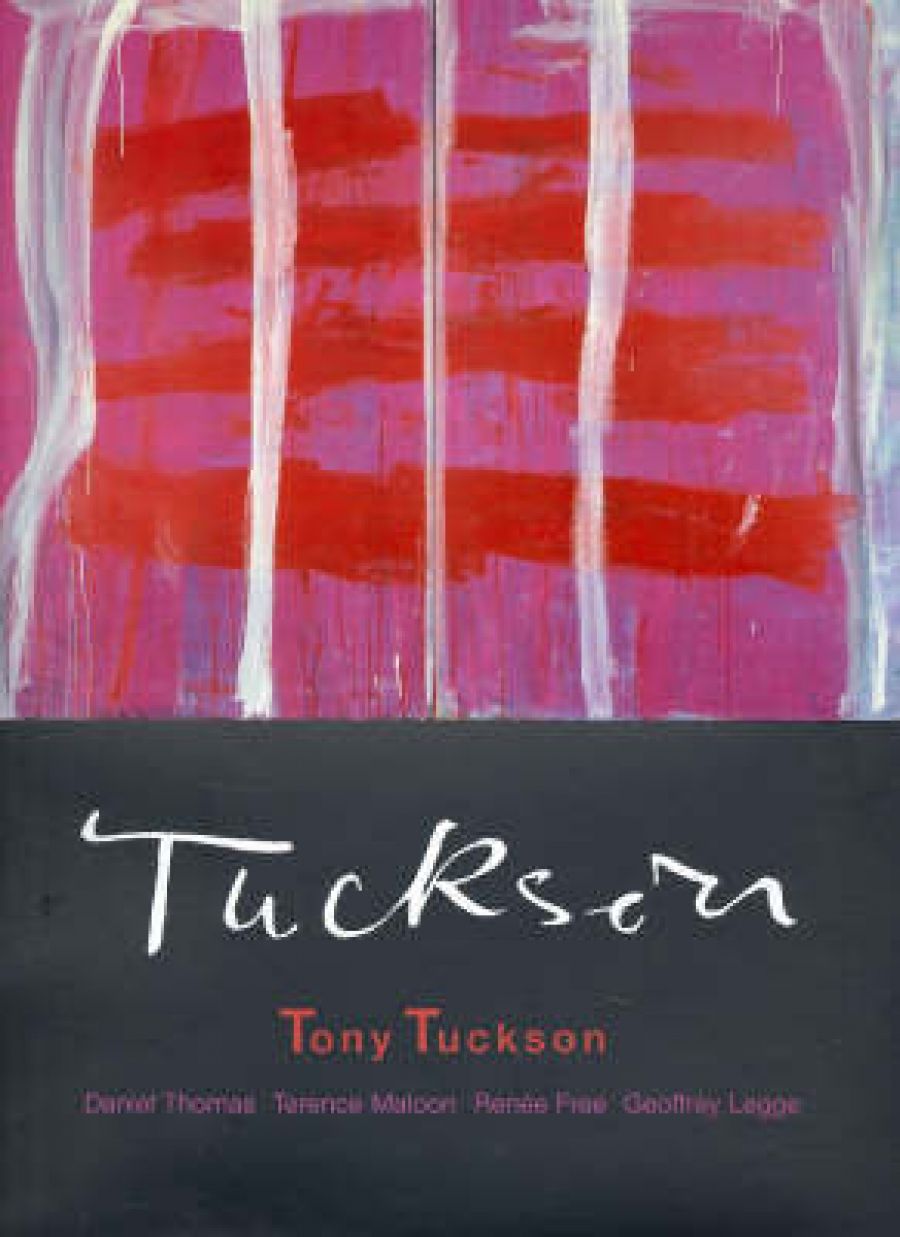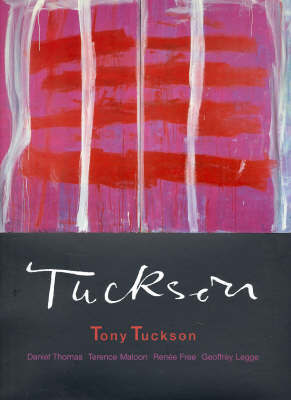
- Free Article: No
- Contents Category: Art
- Review Article: Yes
- Article Title: Tuckson’s touch
- Online Only: No
- Custom Highlight Text:
Lawrence Alloway observed that Abstract Expressionism was the creation of middle-aged artists and not an avant-garde. Jackson Pollock was in his mid-thirties and already a considerable painter when he laid a canvas on the floor and began to swing paint on a stick. Willem de Kooning and Barnett Newman were in their forties before they found their signature styles. For twenty years, those painters explored a variety of styles and thoughtfully drifted towards individual expression; yet the change, when it came, seemed to pounce into their art rather than extend neatly from the preparation. The case was similar with Tony Tuckson.
- Book 1 Title: Tony Tuckson
- Book 1 Biblio: Craftsman House, $88 hb, 256 pp
- Book 1 Cover Small (400 x 600):

- Book 1 Cover (800 x 1200):

Tuckson (1921–73) studied painting at art schools in England and Sydney, where the teachers who influenced him most were colour abstractionists of an older generation, Grace Crowley and Ralph Balson. After graduating, he worked at the Art Gallery of New South Wales, first as assistant to the director, subsequently as the expanding institution’s Assistant Director: he was also, by choice, the inaugural curator of Aboriginal and Melanesian art. For reasons of professional ethics, Tuckson decided not to exhibit his work. His friends saw the occasional painting, enough to know that he continued to paint in the studio attached to his home, but beyond his enthusiasms, and the occasional explosive comment about what constituted painting, he was silent about his own art.
In 1966, Daniel Thomas, junior curator, returned from a trip to the United States and told Tuckson his paintings were equal to the best Abstract Expressionist and colour field art showing in the mainstream New York galleries. Tuckson was soon to see this for himself. Back in Sydney, he approached Frank Watters for a first exhibition in 1970. In a crowded display, the dominant works were red/black/white paintings reminiscent, perhaps, of Robert Motherwell’s striding paintings of the early 1950s, and certain boldly morphing patterns in Melville Island and Melanesian art. In 1973, Tuckson had a second, smaller exhibition – a revelation that he had found a transparent sensitivity and sureness of touch. Six months later, at the height of his powers, he died unexpectedly of cancer. He was aged fifty-two. His widow and executors found in his studio ten thousand undated paintings on paper, and hundreds of undated paintings on board.
This book is about living up to the legacy. Most of the material has been published in a previous edition (1989) or elsewhere, but everything is patiently overhauled, updated, and some works have been rephotographed. A judgment appropriate to the project is that it is the authoritative book about one of Australia’s greatest painters.
Three years after Tuckson’s death, Daniel Thomas organised a retrospective at the Art Gallery of New South Wales. I saw it on a visit to Sydney and was bowled over, especially by early 1970s paintings with trembling vertical lines and paper-thin transparent veils of paint, and by others painted in an agony of white slashes. Tuckson was a Barnett Newman, but he wasn’t; he was Oriental in sensibility, though clearly not in touch; he was Tuckson. While Thomas was at the research stage for the 1976 exhibition, Sandra McGrath broke the news that Tuckson was the best Action Painter in Australia. She quoted him saying, ‘All painting is – is up and down and back and across’, and making the body-stretching fast gestures of an Action Painter.
Thomas’s 1976 essay – enquiring, searching, patient, casting around for answers to questions about the sequence of the works, the painter’s inspirational triggers, and the core evolution of his style – has its third publication here. Thomas regretted not pushing his way into the studio, to see more of the paintings and to ask the curatorial questions that, in the absence of exhibitions and public and private commentary, proved difficult to answer. Perhaps only Daniel Thomas could conduct the careful detective work and come up with markers that stand firm and reliable. He pieced together the evolution of the artist’s style: his early choices of line before modelling, fewer colours, and ‘a personal language of form … in ladder-like clusters of horizontals held down by verticals’. He remembered Tuckson in the unpacking room in 1961 poring over the surfaces of J.M.W. Turner’s oils and watercolours. Tuckson’s Watery (National Gallery of Australia) corroborates Thomas’s suggestion that Turner’s vaporous watercolours of Venice inspired the fragile dry washes of thin oil and fine scribble of bobbing ferry boats, crane and high approach to the bridge. Thanks to Thomas’s empirical research, the record of Tuckson’s influences is not simply the conventional match with contemporary art.
Geoffrey Legge has written about the working legacy, Renée Free about Tuckson’s career at the Art Gallery, and the final chapter by Terence Maloon (first version, 1989) is complementary to Thomas’s. Asking what large heritage is suggested by Tuckson’s art, Maloon found qualities of investigativeness (Cézanne), touch (Matisse), linear conceptualism (Aboriginal painting) and ‘spirit resonance’ (Chinese painting) – Tuckson’s ‘art became, in effect, an arena of Australian multiculturalism’.


Comments powered by CComment